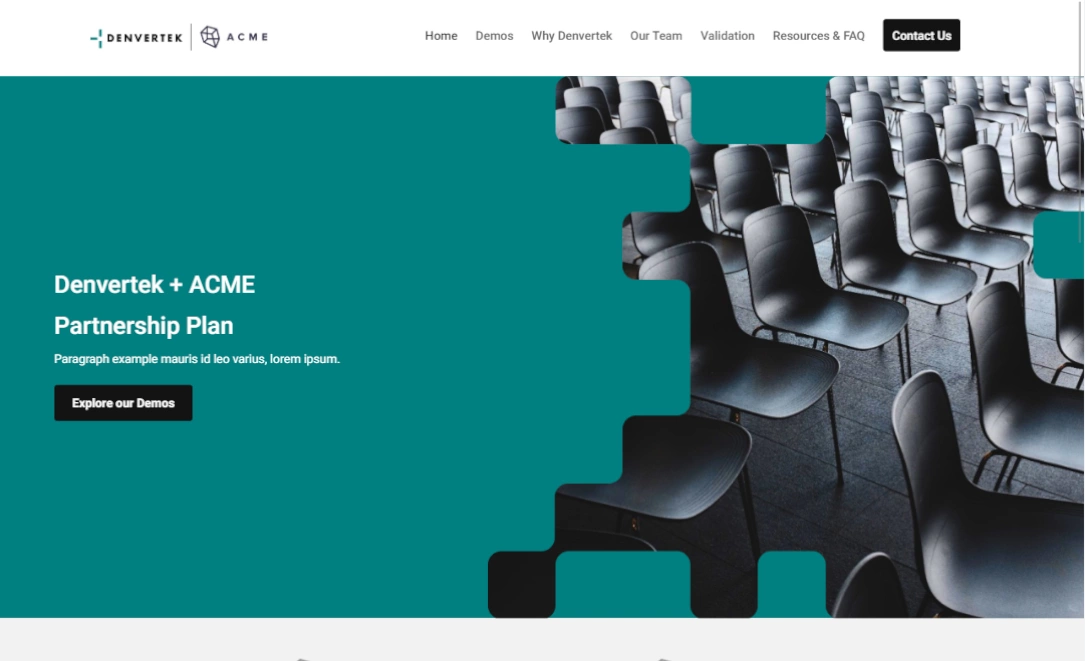Across industries, experts agree that closing a sale requires the right strategies and tools, and improving your sales process translates to your business’s success. Many leaders have made sales enablement their priority, and the phrase is thrown around a lot in the business world. But what is sales enablement?
Sales enablement can mean a laundry list of things. At its core, though, it means providing your sales team the resources it needs to perform at a higher level. It’s a concept, strategy, and culture that in practice offers solutions to problems the sales team has.
In this article, we’ll explain the basics of sales enablement and provide some practical examples of how you can improve your key sales metrics: activity, conversion rate, and average deal value. By the end, you should understand what it means as a concept and have some ideas for how you can enable sales in your business.
Let’s explore the importance of sales enablement and its definition
Let’s define sales enablement?
Sales enablement is anything you can do to close more deals faster and the importance of sales enablement lies in its ability to improve revenue and profits.
As a concept, it’s facilitating a more efficient and effective sales process to achieve higher revenue. As a strategy, it’s identifying what your sales team needs in terms of people, processes, tools, and materials to improve revenue. As a culture, it means continuous improvement of the sales process: testing, learning, and iterating.
Put simply, it’s the strategy you use to improve the three key metrics of any sales process:
- Activity: the number of meetings held and/or demos given
- Conversion Rate: the conversion from activity to sale
- Average Deal Size: the monetary value of the sale itself
When making a sale, these factors are all evaluated. When each value is multiplied together, you can project your sales revenue. So, to be better at sales, you’ll need to increase one (or more) of these metrics. Your sales enablement strategy looks at each of these metrics and says, “What can we do better in this area?”
The solutions you implement can be anything from created marketing content, competitor information, to best practices from seasoned sales professionals. By identifying the needs of your sales teams and the metrics you want to improve, you can craft a more optimized approach. That is sales enablement.
The role of data analytics in the sales enablement process
Data is a salesperson’s best friend. It consolidates customer behavior into actionable analytics to make well-informed decisions. It allows sales teams to pivot their efforts, remain weatherproofed, and stay client-focused.
Sales data is vital to understanding your performance in those three key metrics. As a leader, you can use this data to create informed strategies for improving those metrics. It’s also important to share that information with your reps because it’ll give them insights into what they can improve on.
You can access this data from a CRM like Salesforce or Hubspot. With these platforms, you’ll have accurate pre-sale and post-sale analytics to observe. You’ll see exactly how many leads were converted to sales and the value of those deals. Even a simple spreadsheet to track sales progress can be used to identify performance.
Don’t stop at consumer data, though. Coupling your customer data with internal performance data creates a robust and informed approach toward improving sales. If you want to track the performance of your sales team, you could use a gamified performance tracker like Ambition.
Who owns the sales enablement strategy?
When people ask who owns sales enablement, they do so because they haven’t realized that it is a cross-channel effort between their sales and marketing departments. It involves a lot of overlap between them, and it can be tricky to figure out who does what, especially if siloes are an issue in your company.
Your marketing team will contribute meaningful values and mission statements that your sales team can incorporate into their pitches. Depending on who the market is and what they want to hear, they craft messaging around those concerns. Your sales team will jump in to offer experiential knowledge about established clients or effective selling points. They’ll also be primarily responsible for putting sales enablement strategies to practice.
The collaboration between these teams is dependent on a variety of factors. However, it always comes down to the alignment of the teams and the CFO being there from a budget perspective. It’s best practice to encourage frequent communication between both teams, as aligning their efforts has shown as much as a 34% increase in revenue in some case studies.
Connecting sales enablement strategy with sales enablement processes
Now that we know what sales enablement is, how would you implement those strategies into your sales enablement planning process? Again, you’re looking to improve your performance in one of the three key metrics: activity, conversion rate, and average deal value. This simplifies your strategy, but it also makes the actions you take more meaningful.
Let’s look at each of these metrics, see what challenges may arise, and strategize what solutions you can implement in your strategies.
Finding sales enablement programs to increase lead generation and processing
Let’s say you’re trying to improve sales activity. This primarily focuses on your lead generation process. The problems you’re trying to solve may include:
- How do we get more leads?
- How do we contact our leads and when?
- How do we persuade them to take a meeting?
Now that you’ve identified the problem, it’s time to look for a solution! This is where you use your sales enablement strategy to put in place the right sales enablement program.
First, you may want to improve your lead generation sources, processes, and tools. Diversify your lead sources—email, landing pages, social media platforms—and eliminate sources that have dried up over time. Make routine evaluations of your leads and email list verification a consistent practice. Introduce tools like Hubspot that consolidate your lead generation into one platform, or look into tools that improve your lead captures like OptinMonster.
You may also want to improve your marketing campaigns. Change the focus of your marketing content by asserting your company’s commitment to sustainability, community involvement, or cutting-edge research and development initiatives. Align your consumer data between your sales and marketing team. Use a microsite, and a microsite builder like Zoomforth, to engage new audiences with fresh enterprise communications.
Take a look at your offers and incentives, too. Incorporate special promotions for those who complete a lead capture form. If you’re looking to increase purchases, implement a loyalty program. You can also offer informational incentives like whitepapers, as these also build trust with your leads.
Lastly, consider designating sales reps that excel at prospecting as Sales Development Representatives (SDRs). This can be based on the number of opportunities they’ve created. You may even want to hire more SDRs for your team. For them to succeed, automate, sync and track all their communication channels and give them access to data like buyer intent and consumer behavior.
Using sales enablement technologies to boost conversion rates
Now, let’s say you’re trying to improve conversion rates. The problems you’re seeking to solve may include:
- How do we convert more meetings to sales?
- How do we convert those deals more quickly?
Your sales enablement strategy may address content and delivery methods. You could bring in a sales professional to conduct an L&D initiative on a certain sales approach. If you’re looking to improve your sales proposals, consider going digital! A microsite sales proposal offers a more accessible platform to present your business, and the insights you can gather will allow you to improve proposals further.
There are likely those in your sales team that are the best at closing deals. Take a look at their skill levels and see who you can designate as AEs—this may be based on the number and value of deals they’ve closed. To help them succeed, give them access to buyer engagement data and all past communication and call recordings from clients.
Converting deals quicker is all about urgency during the sales process, and one way to increase urgency is incentives. Make the offers more appealing and the discounts larger. For example, offer a free trial or demo. If your sales reps are giving you insight that the price of your product or service is a turn-off during meetings, you may want to consider adjusting your price.
Tying marketing and sales enablement to raise deal value
Finally, let’s say you’re trying to improve average deal value. The problems you want to solve may include:
- How can we get our customers to buy more of our product at the outset?
- How can we get our customers to purchase add-ons?
- How can we get our customers to purchase upfront for longer terms?
If you want your customers to purchase more from the outset, you may want to introduce new packages or bundles of products. Highlight the value that customers are getting from purchasing the product package rather than individually. Pair certain products that collaborate well with one another. These packages may decrease in overall price when purchased for a longer term.
Add-ons are a great way to increase the value of the deal. Like packages, sales reps should highlight value-adds that give customers more bang for their buck. This is their opportunity to upsell with improvements on the product and increase the deal value. They might also offer additional services like onboarding or increased support. Again, when purchased for a longer term, these add-ons may be reduced in price.
Zoomforth can be the perfect sales enablement solution for your enterprise
Elevating your team’s sales enablement tools is the easiest way to see a return on invested time and effort in your team’s marketing strategies. With the right sales enablement technology, your sales team can scale up, expand your market, and fine-tune their follow-up strategies.
So, you want to try creating microsites to promote your business to niche customers. Where do you start? Why not try a microsite builder named one of the top sales enablement companies in Silicon Valley? Zoomforth is an easy-to-use microsite platform that acts as a one-stop shop for analytics, integrated CRM tools, and comprehensive analytics.
Zoomforth is committed to your success as a business. Introduce your team to Zoomforth’s potential with a free demo.



